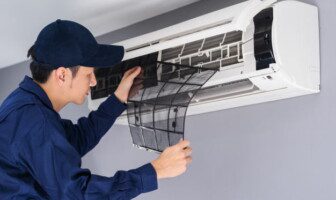
Are you planning on moving to a new home soon? You probably have your whole life packed up in boxes, and ready for the movers. However, you might want to consider a few things before you move your furniture to your new abode.
Before you spend that first night at your new place, you should first take the time to become acquainted with your home and see what may need immediate attention.
A Checklist Guide for New Homeowners
Before you move into your new home, you might want to look at this checklist to avoid loss of time, money, and stress.
Owning a home is a dream for millions, so when you achieve it, do the right thing and check everything before you move in. Here are a few suggestions as to what you should look at first:
1. Do You Have LED and CFL Bulbs in All Fixtures?
Whether you want to install track lighting, ceiling fixtures, or other light decorating ideas, these long-term bulbs last nearly five times as long as incandescent bulbs, saving you money on inevitable multiple replacements.
Just remember that while compact fluorescent light (CFL) bulbs cost slightly less than light-emitting diode (LED) bulbs, the latter is much more efficient. However, in recent years, the price of LED bulbs has decreased significantly.
Replacing all light bulbs in the fixtures in your new home with LED and CFL bulbs will also save you tons of money in the long run since they use only a fraction of the energy that the typical bulbs utilize, which adds up to huge savings on your monthly electric bill.
Try to at least install them in rooms that stay lit for long periods, such as kitchens and dens. You should also invest in bulbs for the areas that may be prone to having a light left on by accident, like a closet or the attic.
2. Change All Your Locks
This may sound strange or unnecessary, especially since you have probably met the sellers of your new home. Still, changing your locks immediately before moving in is necessary.
According to Peninsula General Insurance Agency, a California home and auto insurance agency, “Protection Starts from Home.” You likely won’t know who the original owners gave a key to or whether they may have malicious intentions regarding your property.
Changing all the locks in your new home is always a good measure. It is simple and inexpensive to change the locks to each outside-leading door.
You won’t have to replace the full doors; you can find just a few pieces of basic hardware at any local home repair store. The whole project shouldn’t cost more than $50, and it will protect you from the possibility of a future burglary.
3. Invest in Ceiling Fans
Ceiling fans are an inexpensive and low-energy method for circulating the air in your home. As the fans move and circulate the air they are installed in, the air is evenly distributed, making temperatures easier to regulate.
This means that you can turn the thermostat down a degree or two in the winter and place it a few degrees high in the summer, saving energy bills greatly!
Just be sure the ceiling fan is positioned to blow down on you when it is warm outside and pull away from you during the cooler months to maintain consistency.
4. Air-seal the House
If you purchased a slightly older house, you may experience some problems with air leaks. This may not be an issue if your house is brand new; however, newer building codes have eliminated the problem.
Additionally, many materials used to construct older homes will expand and contract over time. So, unwanted cold or hot air can seep through openings. Check windows, doorways, dryer vents, and even electrical outlets to see if the air is escaping through cracks or holes.
Furthermore, you can apply weather stripping to any cracks for a temporary fix. Additionally, you can use caulk to seal the cracks permanently.
Remember, ignoring these leaks will cost you money. When hot and cool air intended for the interior constantly escapes outside you don’t enjoy the perfect temperate.
5. See If More Insulation is Needed in the Attic
Do you have an unfinished attic? If so, it is best to examine how much insulation is installed up there since heat rises and easily escapes through roofs.
Insulation should be installed that is at least 6 inches thick. You must install it between the beams and keep it twice as thick if you live in the colder northern climate.
If your insulation is damaged or inadequate, you must replace it right away. This will help you minimize the cost of extraneous heating and cooling. Can you see the tops of the joists? Then, you don’t have enough insulation to make it through an average winter.
6. Protect the Foundation of the House
The ground that surrounds your foundation outside must slope away from it at a minimum of 6 inches over at least 10 feet. This is so the water from rain and melting snow can saturate the soil surrounding the foundation walls.
Therefore, it creates enormous pressure around your house foundation, which can result in pressure causing cracks in the foundation if they are not repaired. Your house could sag and even collapse if the foundation is weak.
You should also check to see if there are any cracks in your foundation. Many older buildings have some smaller cracks due to the weight of the home and the settling process.
If you desire a stable home, you shouldn’t allow any cracks. If the cracks continue to grow, you must hire a specialist to take care of the problem immediately.
7. Scan your Walls Before Drilling
When you move into a new home, you can hardly wait to start decorating. You start hanging up shelves, family photos, and artwork without being aware of what might lie behind the walls. There could be cables, wires, ductwork, or even pipes.
Stud sensors, which typically run only about $25, can sense studs, wires, and most metals. However, you must know that these stud sensors are not always 100% accurate.
Therefore, it is best to drill holes at a maximum of 1 ¼ inch deep for safety. This will penetrate the plaster or drywall; however, far from where hidden wires and pipes are located.
Wrapping Up
If you check these items immediately, you will save time and frustration later. You may also save some cash along the way, which you can now invest back into your cherished homestead.
Additionally, you waited a long time for this moment, so treat your home with respect. Furthermore, you will get enjoyment from your house for years to come, so follow this checklist.
Read More:




























